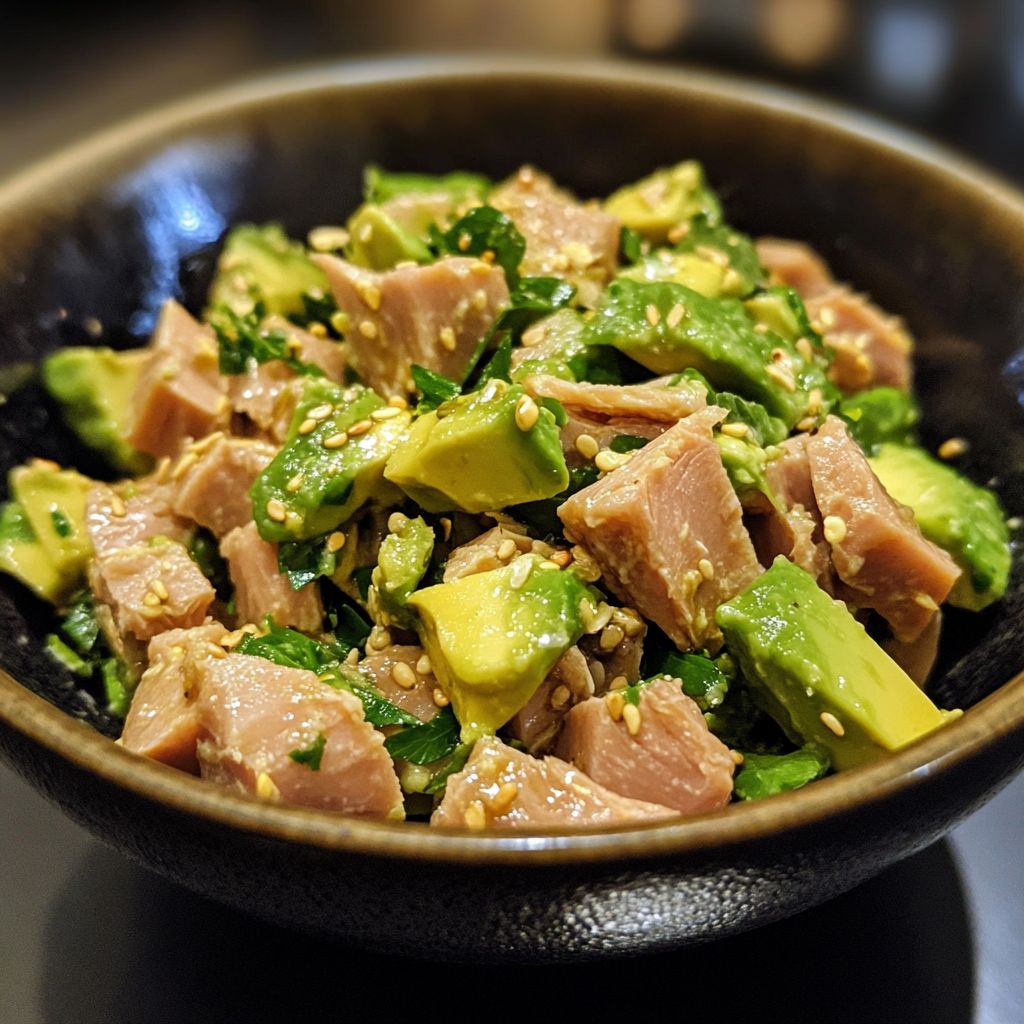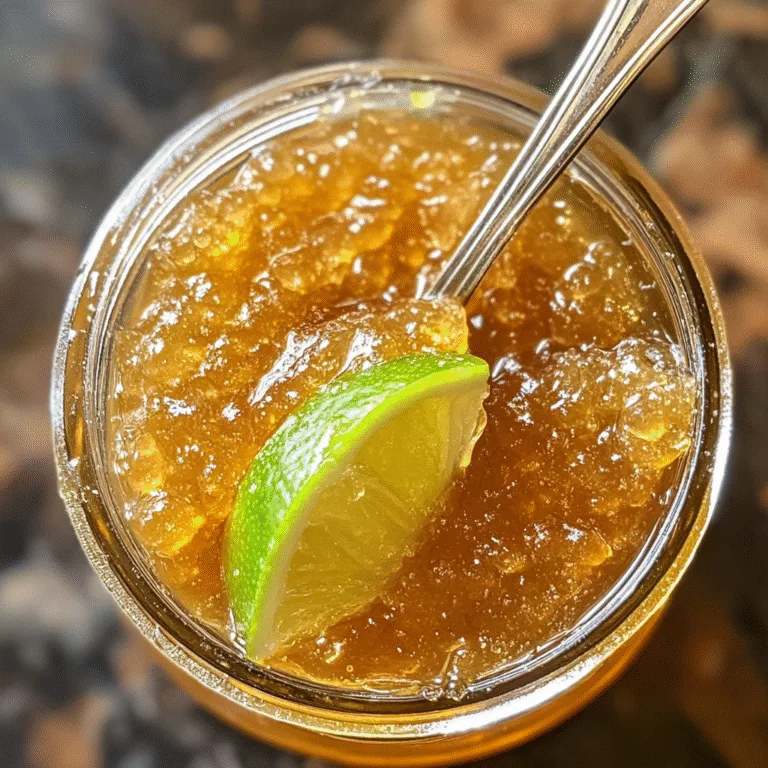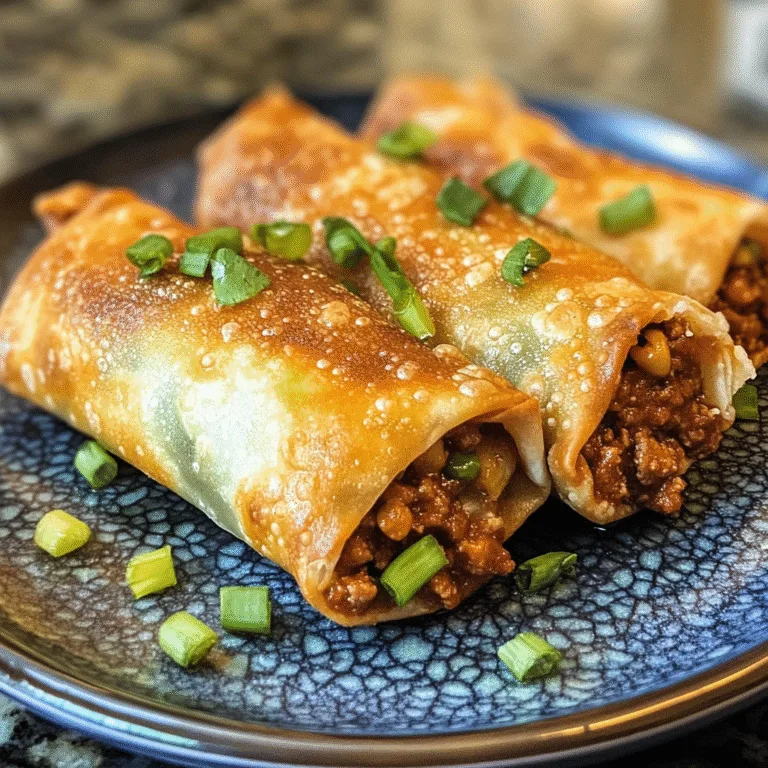Follow Me On Social Media!
Avocado Tuna Salad
Introduction
Did you know that the average American consumes only half of the recommended daily amount of omega-3 fatty acids, yet a single serving of Avocado Tuna Salad can provide up to 40% of your daily needs? This surprising statistic challenges the common belief that getting proper nutrition requires expensive supplements or complicated meal prep. Our creamy, protein-packed Avocado Tuna Salad proves that healthy eating can be both delicious and incredibly simple, combining the heart-healthy fats of avocados with the lean protein of tuna in just 10 minutes.

Ingredients List
For the Perfect Avocado Tuna Salad (Serves 2-3):
- 2 ripe avocados (should yield slightly to gentle pressure – substitute with 1 avocado + 2 tbsp Greek yogurt for lighter version)
- 2 cans (5 oz each) tuna in water, drained (wild-caught preferred for best flavor and sustainability)
- 2 tablespoons red onion, finely diced (sweet onion or shallots work beautifully as alternatives)
- 1 tablespoon fresh lemon juice (lime juice adds a zestier kick if preferred)
- 2 tablespoons fresh cilantro, chopped (parsley or dill make excellent substitutes)
- 1 celery stalk, diced for satisfying crunch (cucumber adds refreshing texture variation)
- 1 tablespoon olive oil (avocado oil complements the flavors perfectly)
- ½ teaspoon garlic powder (1 fresh garlic clove, minced, for more intense flavor)
- Salt and black pepper to taste
- Optional additions: cherry tomatoes, capers, or a dash of hot sauce for extra complexity
Timing
Preparation Time: 8 minutes
Cooking Time: 0 minutes (no cooking required!)
Total Time: 8 minutes
Comparison note: Traditional tuna salad recipes typically take 12-15 minutes due to mayonnaise mixing and additional prep steps. Our avocado-based version cuts prep time by nearly half while delivering superior nutritional value.
Step-by-Step Instructions
Step 1: Prepare Your Avocados
Cut the avocados in half, remove pits, and scoop the flesh into a medium mixing bowl. Choose avocados that are perfectly ripe – they should feel slightly soft but not mushy. Immediately drizzle with lemon juice to prevent browning and add bright flavor that will enhance the overall taste profile.
Step 2: Mash to Desired Consistency
Using a fork, gently mash the avocado to your preferred texture. For a chunky avocado tuna salad, leave some larger pieces intact. For a creamier consistency similar to traditional mayonnaise-based versions, mash more thoroughly. Pro tip: slightly under-mash rather than over-mash to maintain appealing texture.
Step 3: Incorporate the Tuna
Drain the tuna completely and add it to the mashed avocado. Gently fold the tuna into the avocado base using a fork, breaking up any large chunks while maintaining some texture. The natural oils from quality tuna will help create a rich, satisfying base.
Step 4: Add Aromatics and Crunch
Fold in the diced red onion, chopped celery, and fresh cilantro. These ingredients provide essential textural contrast and bright flavors that complement both the creamy avocado and savory tuna. Dice vegetables uniformly for the best eating experience.
Step 5: Season and Finish
Drizzle with olive oil and sprinkle in garlic powder, salt, and freshly ground black pepper. Taste and adjust seasonings as needed. The salt will help bring out the natural flavors of all ingredients, while the olive oil adds richness and helps bind everything together beautifully.
Nutritional Information
Per Serving (recipe serves 2-3):
- Calories: 320
- Protein: 28g
- Carbohydrates: 12g
- Total Fat: 20g (primarily heart-healthy monounsaturated fats)
- Fiber: 8g
- Sugar: 2g
- Sodium: 380mg
Health Benefits: This avocado tuna salad provides an excellent source of omega-3 fatty acids, which support brain health and reduce inflammation. The high fiber content promotes digestive health and helps maintain stable blood sugar levels throughout the day.
Healthier Alternatives for the Recipe
For Lower Calories: Replace one avocado with ½ cup plain Greek yogurt and add extra lemon juice for tanginess. This modification reduces calories by approximately 100 per serving while maintaining protein content.
Vegan Version: Substitute tuna with one can of drained chickpeas, mashed slightly, plus 1 tablespoon nutritional yeast for umami depth. Add nori flakes for ocean-like flavor reminiscent of traditional tuna.
Low-Carb Adaptation: This recipe is naturally low-carb, but you can reduce carbs further by serving over lettuce cups instead of bread or crackers.
Gluten-Free Option: The base recipe is naturally gluten-free – simply ensure any serving accompaniments like crackers or bread are certified gluten-free.
Serving Suggestions
Serve your fresh avocado tuna salad over crisp butter lettuce cups for an elegant, low-carb presentation. It also makes an exceptional sandwich filling on sourdough bread or stuffed into ripe tomatoes for a Mediterranean-inspired lunch.
Perfect Pairings:
- Whole grain crackers or pita chips for satisfying crunch
- Fresh cucumber slices or bell pepper strips for extra vegetables
- A light white wine like Sauvignon Blanc or sparkling water with lime
- Side of mixed greens dressed with simple vinaigrette
Common Mistakes to Avoid
Using Overripe Avocados: Mushy avocados create an unappetizing, watery texture. Choose avocados that yield slightly to pressure but maintain structural integrity.
Over-Draining Tuna: While you want to remove excess water, completely dry tuna can make the salad too dense. Leave just a hint of moisture for optimal texture.
Adding Salt Too Early: Salt draws moisture from vegetables. Add seasonings just before serving to prevent the salad from becoming watery.
Skipping the Acid: Lemon or lime juice isn't just for preventing browning – it's essential for balancing the rich fats and enhancing all flavors in the dish.
Storing Tips
Refrigeration: Store covered avocado tuna salad in the refrigerator for up to 2 days maximum. Press plastic wrap directly onto the surface before covering with a lid to minimize air exposure and prevent browning.
Freezing: Not recommended due to avocado's high water content, which becomes mushy when thawed.
Make-Ahead Tips: Prepare all vegetables and store separately from the avocado-tuna mixture. Combine just before serving for best texture and color. If you must make ahead, add extra lemon juice and store in an airtight container with plastic wrap pressed against the surface.
Conclusion
This Avocado Tuna Salad recipe proves that healthy, satisfying meals don't require hours in the kitchen or expensive ingredients. With its perfect balance of protein, healthy fats, and fresh flavors, it's destined to become your go-to recipe for quick lunches, light dinners, or meal prep sessions. The versatility and nutritional benefits make it an ideal choice for anyone seeking delicious, wholesome food without the fuss.
Ready to experience this game-changing twist on classic tuna salad? Grab your ingredients and give this recipe a try today – then share your creative variations and serving ideas in the comments below!
FAQs
Q: How long does avocado tuna salad stay fresh?
A: When properly stored in the refrigerator with plastic wrap pressed directly against the surface, avocado tuna salad maintains optimal quality for up to 2 days. The lemon juice helps preserve color and freshness.
Q: Can I make this recipe ahead for meal prep?
A: For best results, prepare the diced vegetables and tuna separately, then mash avocados and combine everything just before eating. If you must make it completely ahead, add extra lemon juice and consume within 24 hours.
Q: What's the best type of tuna to use?
A: Water-packed tuna works best as oil-packed versions can make the salad too rich. Wild-caught tuna offers superior flavor and sustainability, while chunk light tuna provides excellent texture for mixing with avocado.
Q: How can I prevent my avocado tuna salad from turning brown?
A: Use fresh lemon or lime juice immediately when mashing avocados, store with plastic wrap pressed directly on the surface, and consume within 1-2 days. Avoid exposure to air as much as possible during storage.












